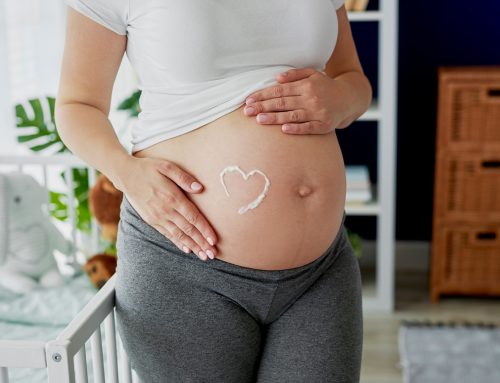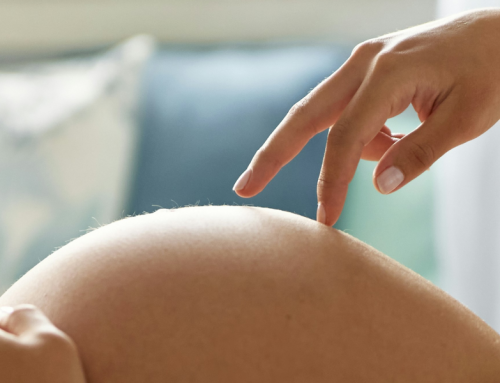Embryo implantation is the process by which the blastocyst penetrates the lining of the uterus, which occurs a few days after fertilisation. This is the moment when a woman starts to develop a pregnancy. Under normal conditions, embryo implantation takes place in the uterine cavity, namely in its mucous membrane (endometrium).
For a woman to become pregnant naturally, the sperm cells have to reach the fallopian tube, where the egg cell is waiting for them. Once they meet, the egg and sperm must unite and this union begins a journey to the uterus where it implants already transformed (after several cellular changes it has reached the blastocyst stage) into an embryo.
Implantation means that the embryo, in which two parts can already be distinguished: the inner cell mass, which will form the foetus, and the trophectoderm, which will form the placenta, nests in the tissue that lines the inside of the uterus (called the endometrium). In order for it to nest, certain ideal conditions must be met.
What does the embryo implantation process involve?
Thus, the embryo implantation process depends on a number of factors:
- That the sperm are transported correctly. That is, that the sperm are able to make their own way through the vagina and cervix and reach the fallopian tube. The cervical mucus that protects the entrance to the uterus becomes thinner during ovulation specifically to allow sperm to enter, and sperm can survive in this environment for up to five days after ejaculation. If there is low sperm motility, this step may be affected.
- That the egg that is deposited in the tube is of good quality and is actually deposited there, in an area of the tube called the ampullary-isthmic junction, where it rests for about 30 hours. There are conditions, such as endometriosis, which can affect the functioning of the fallopian tubes and result in the egg not being deposited in this area.
- That, after ovulation, the egg meets the sperm within 12 to 24 hours. There is a membrane in the egg called the zona pellucida containing sperm receptors that, once broken by sperm, becomes impermeable to further sperm entering.
- That once fertilised, the fertilised egg (zygote) progresses downwards towards the uterus. If there are structural defects in the fallopian tubes, this may also be affected.
- That the embryo, over the following seven days, begins a process called mitosis that transforms it into a conglomerate of cells (the blastocyst). As a woman ages, this process deteriorates more and more due to the poor quality of her eggs.
If all these conditions are met and the blastocyst successfully reaches a receptive endometrium, implantation occurs in several stages so that the outer surface of the embryo is broken and the part of the inner cell mass is positioned facing the endometrium. This contact breaks the surface layer of the endometrium and it is then that the trophoblast cells that will form the placenta invade the endometrial tissue and become anchored.
Embryo implantation in IVF
In an In Vitro Fertilisation (IVF) treatment, either with your own eggs or donor eggs, in order to achieve embryo implantation, it is first necessary to extract the eggs and fertilise them in the laboratory, with your partner’s sperm or that of a sperm donor. At Eugin, these pre-embryos are cultured for up to 7 days in our state-of-the-art incubator called EmbryoScope+.
The following days are therefore a continuation of the embryo’s development and an attempt to implant in the endometrium. The individual phases depend on the developmental stages of the embryos. Given our case, we could organise it as follows.
For 5-7 day old embryos
- 1 day after transfer, the blastocyst initiates fertilisation.
- 2-3 days after the transfer, the embryo begins to implant, nestles in the endometrium and penetrates deeper and deeper within the endometrium.
- 5-8 days after the transfer, the implanted embryo continues to develop in the endometrium and production of the HCG hormone begins (the so-called ‘pregnancy hormone’, as its detection enables us to confirm pregnancy).
- On day 9 after the transfer: the concentration of the HCG hormone in the body is high enough to test for pregnancy.
What are the symptoms of embryo implantation?
In another blog post, we talked to you about the symptoms of pregnancy after a successful implantation. While each woman is different, there are some common symptoms that can give a clue until the HCG hormone appears in the pregnancy test 14 days after fertilisation. In the case of IVF, as we have seen, this timeframe depends on when the transfer takes place.
What happens when the embryo does not implant?
When in an in vitro fertilisation process pregnancy is not achieved after three IVF cycles or after a transfer of 6-10 embryos, it is said that there is an implantation failure. There are many causes of implantation failure, as we have said, because they can affect any of the phases of the process. They range from the quality of the eggs and sperm not being good, to the timing of conception not being appropriate, or the endometrium not being receptive. So, depending on the cause, there is also a range of solutions to try to ensure that the implantation of the embryo is successful.
Therefore, we encourage you to contact us to study your case personally and offer you the solution that suits you best.






